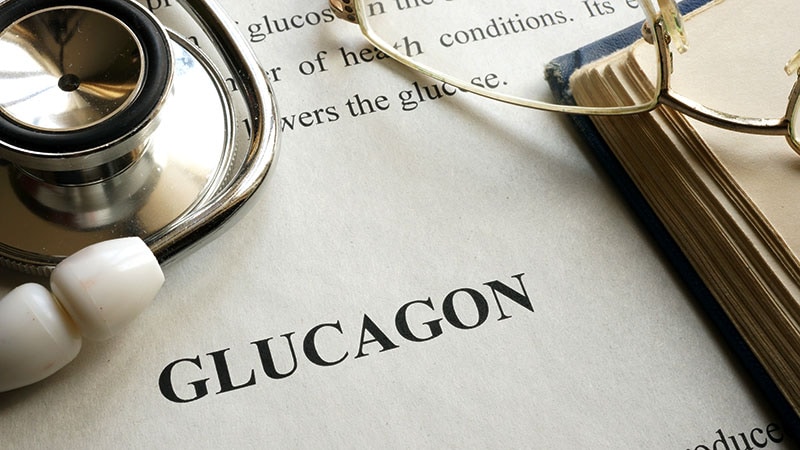A new minimally invasive device, while still in development, could become a lifesaver for individuals with diabetes who experience hypoglycemia, according to researchers at the Massachusetts Institute of Technology (MIT) in Cambridge, Massachusetts.
In a paper published in Nature Biomedical Engineering, Siddharth R. Krishnan, PhD, now an assistant professor of electrical engineering at Stanford University in Stanford, California, and colleagues at MIT described a wireless device implanted into diabetic mice that prevented hypoglycemia.
The implant weighs < 2 g and is only 3 cm3 in size; it remains under the skin and releases a powdered version of glucagon automatically when a sensor detects low blood sugar.
The researchers simulated hypoglycemia in the mice, and the release of the dry glucagon was triggered wirelessly. Measurements showed a rapid rise in blood glucose soon after the release, with a peak of 30 mg/dL after no more than 15 minutes.
A second set of studies replicated conditions that often drive hypoglycemia, such as missed meals and automated infusions from insulin pumps. Similarly, the use of the wireless release of dry glucagon resulted in blood glucose concentrations above the threshold for hypoglycemia (average concentration of 80 mg/dL) within the first hour after the release. An area under the curve analysis over 30 minutes after release showed significant changes in the glucose group compared with the control group who received lactose.
‘A Pathway to Emergency Rescue’
“Glucagon is widely administered as an emergency rescue drug for patients suffering acute hypoglycemia, particularly in the context of type 1 diabetes,” corresponding author Daniel Anderson, PhD, a professor at the Koch Institute for Integrative Cancer Research at MIT, told Medscape Medical News.
Glucagon’s short half-life and low stability in solution has made development of pump systems a challenge, he said. By contrast, “Dry powder versions of glucagon offer long-term stability but are difficult to deliver,” he said. “An implantable device that can respond to hypoglycemia and release dry powder glucagon potentially offers a pathway to emergency rescue from hypoglycemia events without the need for patient intervention,” Anderson said.
The early impact of the dry power was unexpected, Anderson said. “The glucagon in our system is a dry powder that we designed to dissolve directly in biofluid, and the timeline for this dissolution and subsequent availability of the drug in circulation was an open question when we started this project,” he noted. “The fact that we saw biological activity within 5 minutes of drug release was an important result in this context, and not one that we predicted.”
Although the device is not ready for human use, the size and longevity are key questions for adoption in clinical practice, Anderson told Medscape Medical News. “We are working on miniaturizing the device, so it is compatible with minimally invasive insertion techniques, and with a sufficient number of doses to provide protection from acute hypoglycemia for multiple years,” he said. “So far, we have validated the device in preclinical small animal models.” Simultaneously miniaturizing the system and optimizing the dose and longevity in large animal models are the next steps for research, he added.
Unmet Need for Glycemic Control
“Hypoglycemia and fear of hypoglycemia remains major barriers to optimal glycemic control for those with diabetes,” said Andrew Kraftson, MD, a specialist in endocrinology and internal medicine at the University of Michigan, Ann Arbor, Michigan, in an interview.
“Glucagon emergency delivery devices have advanced and become more user friendly but will not work if not available or expired. Liquid glucagon presents numerous challenges and is not yet commercially available for dual hormone insulin pump use,” said Kraftson, who was not involved in the research.
“Dual hormone pumps that are being studied or have been approved in Europe are large/bulky, may require two CGM [continuous glucose monitoring] sensors, and may require glucagon to be refilled more frequently than insulin, so a nonliquid, implantable device could avoid some of the obstacles posed by liquid glucagon,” Kraftson noted.
However, more research is needed on the logistics of human implementation of the glucagon delivery device tested in the current study, Kraftson told Medscape Medical News. Questions include how the device would be implanted; how many doses the reservoir would hold; and how often, on average, it would need to be changed, he said. Other factors include how cumbersome this device might be for humans, potential risks for irritation or infection, and options for manual delivery in the event of a malfunctioning CGM or signal challenges in device communication, he said.
“Ideally, glucagon use for patients with diabetes would expand beyond emergency rescue,” Kraftson added. “Reducing or even holding insulin is sometimes insufficient to avoid hypoglycemia, particularly rapid onset.”
“Additionally, eating carbohydrates to prevent or treat hypoglycemia is not ideal given the risk of subsequent overcorrection/hyperglycemia and weight gain; therefore, more frequent, sensor/algorithm-based use of glucagon can more effectively achieve stable glucose levels and help avoid the ‘rollercoaster,’” he said.
The small size of the device in the current study may limit its ability to participate in the larger mission of glucose management but could certainly still play an important role in hypoglycemia reduction, he noted.
This study was funded by the Leona M. and Harry B. Helmsley Charitable Trust, the National Institutes of Health, a JDRF postdoctoral fellowship, and the National Institute of Biomedical Imaging and Bioengineering.
Anderson and several coauthors reported being inventors on a patent application relevant to the technology described in this study but had no other financial conflicts of interest.
Kraftson had no financial conflicts to disclose.
